SAN ANTONIO (Day 4 - part 5)
We continued our drive along the mission road.


Crossing over the San Antonio River via the New Espada Dam
Our next stop was Mission San Juan... or Mission San Juan Capistrano.
Unlike Mission San Jose, San Juan wasn't built here initially. It began as San Jose de los Nazonis in 1716 out in East Texas. But it wasn't successful (partly because of inadequate military protection), so it was transported here in 1731 and renamed to avoid possible confusion. It takes its name from St. John (Juan) of Capistrano or Giovanni di Capistrano (1386 - 1456). He was a Franciscan priest and missionary who fought in Hungary as a Christian warrior against Turkish invaders.... at the age of 70! He died a short time later from a plague. He was canonized in 1690.
Similar to the other mission compounds, it included a church and plaza surrounded by a defensive wall. It too had a granary, convent, workshops and other storage facilities. At one point, it had as many as 200 residents. There were fertile fields with irrigation canals (acequias) and a prosperous ranch with over 3,500 sheep and 3,000 cattle. The mission produced cured hides, wooden articles and ironwares. Evidence suggests it was never as successful as its counterparts, partly because the Spanish government did not give it enough land to both cultivate food and to engage in ranching. It also got a larger share of Apache raids.
Along with all the other missions, it was partially secularized in 1794. A building built in 1824 was used for residential purposes, but of the rest the mission experienced an extended period of neglect. Restoration finally arrived in the 19302 with the Works Progress Administration.


A map of the current grounds (click for a larger view)
By 1756, the mission’s first stone church was completed (mass was originally celebrated in a thatch-roof shed), as were a convent building and granary. By 1762, accounts indicate a second church building was under construction. Today, there remains the second church and convento, ruins of an unfinished third church, and foundations of the surrounding wall, granary and Indian residences.

An illustration of back in the day (click for a larger view). The blue structures were added after the mission days.


Foundations of some Native living quarters along the outer wall


The parish building was built in 1968 using stone recycled from earlier mission walls


Approaching the second church. Along the low outer wall were tiles with Roman numerals, indicating the Stations of the Cross.


The church was built over part of the foundation of an early granary and only intended as a temporary sanctuary.
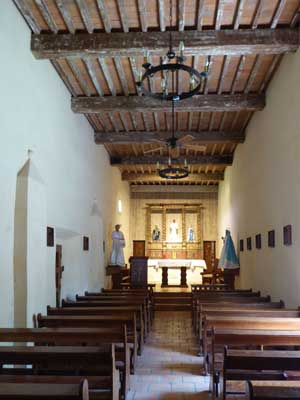

The altar

It definitely looks as if they were all holding something at some point.


A side altar
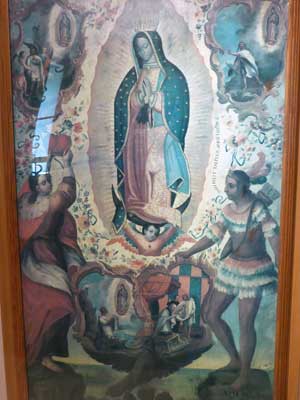

Our Lady of Guadalupe ... with imagery from the local history
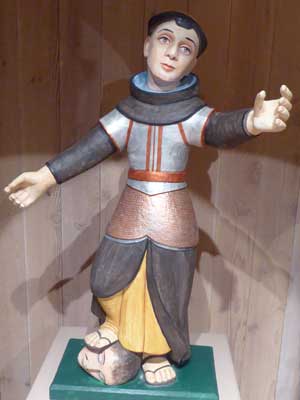

Giovanni di Capistrano, the Christian warrior, presumably standing on the (possiblly severed) head of his defeated Turkish enemy while wearing... sandals
As with the altar statues, it appears as if he used to hold something. And sure enough, this is what he used to look like:


Image of the statue from 2016 ... to match a historic drawing
Apparently there were sooooo many robberies of religious artifacts and ceremonial objects from inside the church in 2017 that they actually had to close its doors to the public for a while until more security could be added. But that didn't stop thieves from stealing three hand-carved, Spanish Colonial-period statues from the altar in 2000, including one from 1731 of Giovanni de Capistrano. It was replaced by an 18th-century statue of Saint Joseph, but it's hard to tell from the news articles which statues we were looking at today.
The convento was filled with exhibits on local and mission history.




The Spanish moving into the New World and Texas
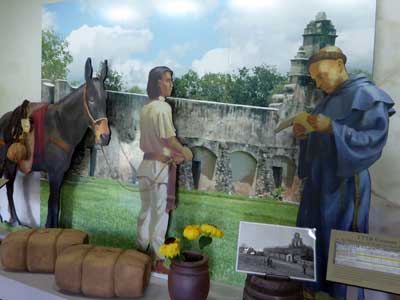

Founding the missions



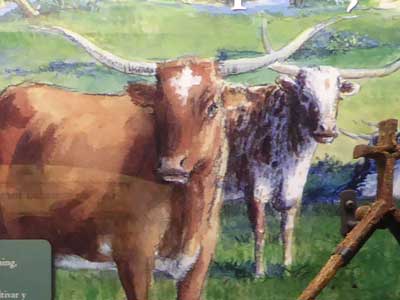
Longhorns!
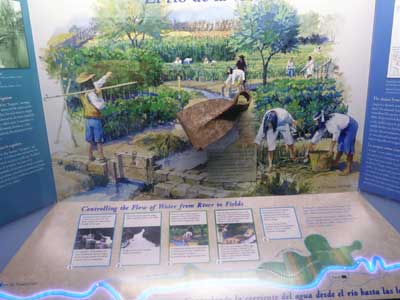

Forming the fields and irrigation ditches. ... Haha! I want this guy's job!
Back outside, we made our way back down the other side of the compound.


A larger church was planned and construction started in 1772, however, a lack of labor caused production to halt in 1786.

Looking across the compound at the convento and second church
return • continue